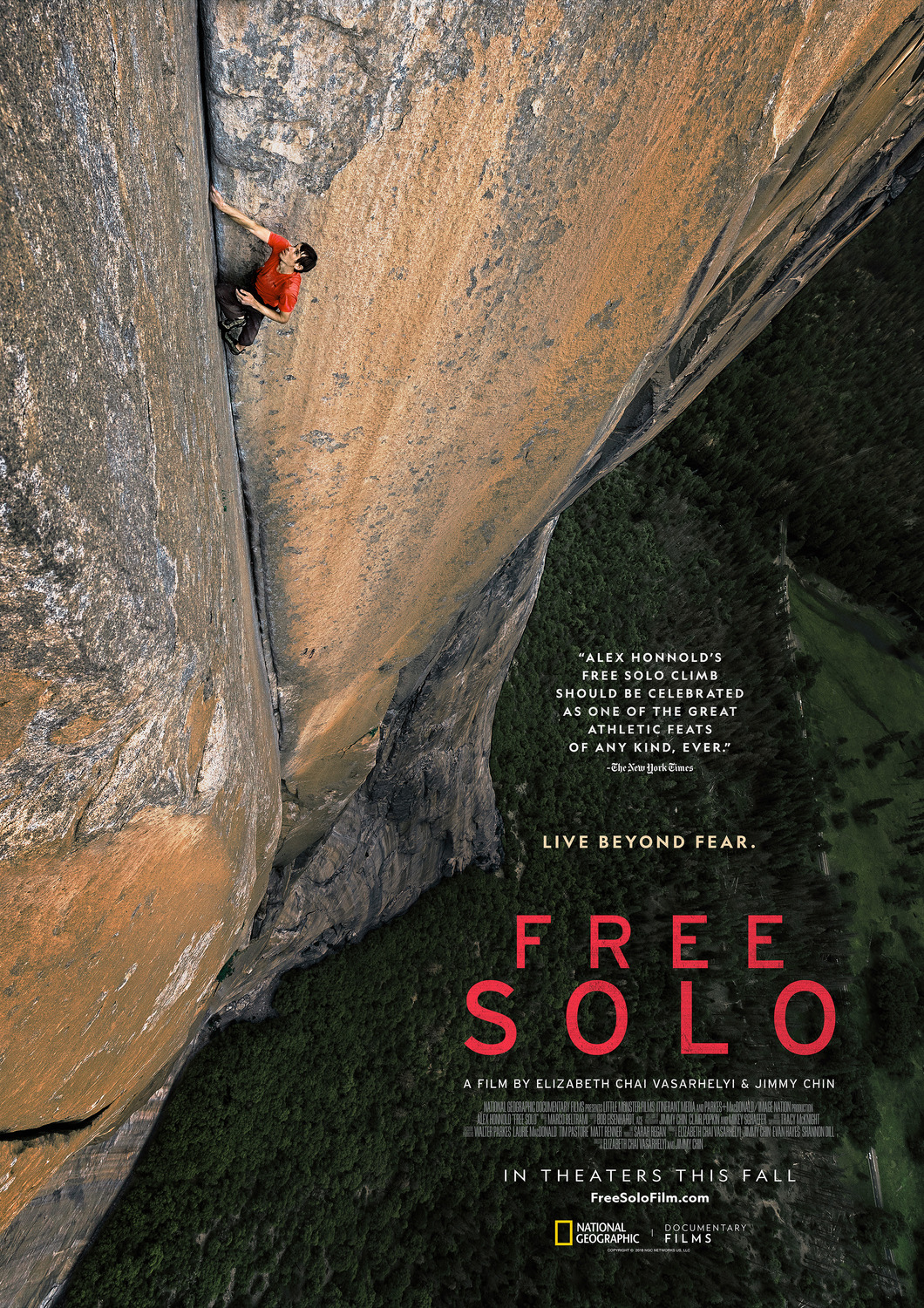It’s extremely rare for a rock climber to make international headlines, but 31-year-old Alex Honnold did just that when, on June 3, 2017, he scaled the 3,300-foot-tall vertical granite wall of El Capitan in California’s Yosemite National Park. It’s an impressive enough feat with ropes and pitons (which Honnold had previously done more than 40 times), but this climb was different; Honnold did it by himself and with no ropes, nets, or equipment of any kind—only a small satchel of chalk on his belt. At any point during the four-hour climb, he could have very easily fallen to his death (“You either climb perfectly or die,” he said beforehand), and it’s that one, singular fact that makes Free Solo, the National Geographic documentary chronicling the event, such a literal white-knuckle ride.
The fact that the film remains so entirely compelling and nerve-wracking despite the audience knowing that Honnold did, in fact, accomplish the climb is a testament to not only the feat itself but to the filmmaking abilities of husband-and-wife directing team Jimmy Chin and Elizabeth Chai Vasarhelyi. The actual climb takes up the bulk of the last half-hour of the film, and if anyone is able to sit through it without squirming in their seat, looking away a handful of times and repeatedly feeling their stomach in their throat, they should be examined immediately by medical professionals; there’s a good chance they’re dead. Or at least unconscious. There are slasher horror flicks chock-full of jump scares that are more calming than this thing. And again, this is with full knowledge that Honnold finishes the climb unscathed.
The balance of the film is an insightful look at Honnold himself—tracing his climbing routes back to his childhood, trying to discover what “makes him tick”, and then bringing us along through his mental and physical preparations. And though we may never grow to appreciate everything that’s going on in his brain, we certainly at least begin to understand what motivates him. At one point, pre-climb, Honnold undergoes an MRI, where it’s discovered his amygdala (the part of the brain responsible for recognizing fear) doesn’t fire like the average Joe’s. No kidding. And the fact that we also get a montage of famed hikers who have died free-soloing various mountains (many of whom were friends of Honnold) doesn’t clear anything up either.
And then there’s “The Boulder Problem”.
The most dangerous and precarious pitch on the climb comes about two-thirds of the way up. After bracing his entire body weight on a tiny bump as wide as half a thumb, Honnold then has to karate-kick his leg out and hope it lands just perfectly on a vertical ledge almost three feet away. It was the part of the climb Honnold was most worried about, and Chin and his crew expertly ratchet up the tension (as if we need more) when Honnold reaches it. The entire sequence, which lasts less than a minute, is perhaps the most terrifying of any scene in recent years and is, by itself, worthy of the Best Documentary Feature Oscar nod that the film has since earned.
It’s honestly hard to recommend Free Solo since it seems far beyond cruel and unusual punishment to suggest someone sit through it. For those who can stomach it, though, and manage to keep the bile down long enough to appreciate the feat’s significance and the universal themes of achievement and perseverance in overcoming obstacles (not to mention the incredible cinematography), Free Solo is a marvelous documentation of perhaps the most stunning athletic achievement in history—certainly, at least, the most death-defying. Just be prepared to feel as though your own life hangs in the balance, too, with every step Honnold takes.
Rating
5/5 stars
